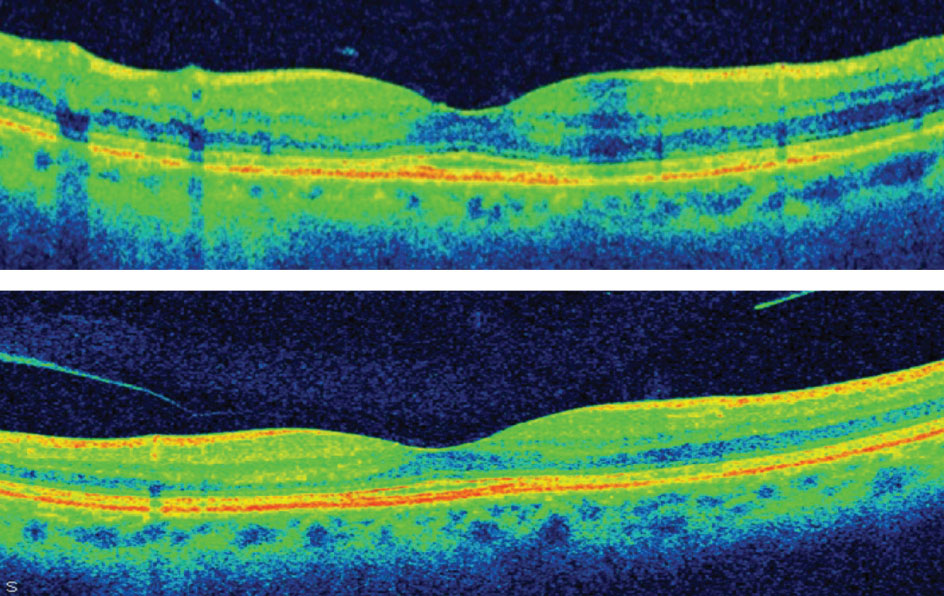 |
| Patients with hydroxychloroquine retinopathy recognized at a mild stage generally stabilize their thickness values within six to 12 months after discontinuing the medication. Photo: Marlon Demeritt, OD. Click image to enlarge. |
Currently, the most commonly used criteria for the diagnosis of hydroxychloroquine retinopathy rely primarily on subjective inspection of individual cross-sectional OCT images or visual fields. These tests are not only less sensitive but also have considerable inter-observer variation, and borderline abnormalities may lead to false positive diagnoses. A research team in California demonstrated that sequential plots of macular thickness using standard OCT measurements can often identify a discrete onset of rapid retinal thinning and enable objective recognition of hydroxychloroquine toxicity changes years earlier than present techniques.
The study assessed 301 long-term hydroxychloroquine therapy patients at Kaiser Permanente Northern California who had a minimum of four OCT studies that included ETDRS retinal thickness values over a minimum interval of four years.
Retinal thinning in 219 stable patients on long-term therapy averaged 0.62µm per year, while 82 patients showed a period of relatively linear rapid thinning with a loss of 3.8µm per year. Of the patients with rapid thinning, 38 eventually developed conventional OCT or 10-2 visual field signs of hydroxychloroquine retinal toxicity. The cumulative retinal thinning in these patients was 25.1µm compared with 15.7µm in those without conventional toxicity.
“Comprehensive clinicians increasingly perform screening OCT studies in long-term hydroxychloroquine patients and face the difficulty of evaluating sometimes subtle distinctions between normal and toxic structural changes,” the researchers wrote in their paper. “The creation of sequential full retina thickness plots of the ETDRS zones enable objective assessments and could be generated automatically by OCT device manufacturers.”
Effective screening for early toxicity is important since patients with hydroxychloroquine retinopathy recognized at a mild stage generally stabilize their thickness values within six to 12 months after discontinuing the medication. The team warns that it is important to recognize that by the time conventional OCT and visual field signs of retinopathy are observed, retinal thinning (i.e., toxic structural changes) has already been taking place for several years. “Earlier recognition of structural changes in the retina does not necessarily mean a patient must discontinue therapy, but it gives the patient and prescribing physician an earlier opportunity to adjust dosage, consider alternatives and assess the risks to vision,” they noted.
Melles MB, Marmor MF. Rapid macular thinning is an early indicator of hydroxychloroquine retinal toxicity. Ophthalmology. May 11, 2022. [Epub ahead of print]. |

